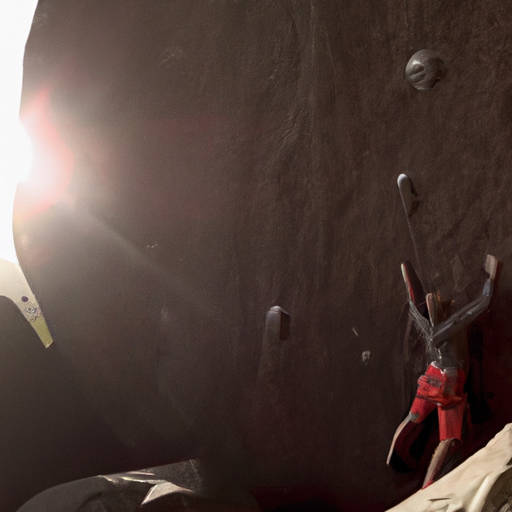-
Table of Contents
Bouldering vs. Sport Climbing: Which Style is Right for You?

Introduction
Climbing is a great way to stay fit, challenge oneself, and enjoy the beauty of the outdoors. However, before deciding to take up climbing, it’s essential to understand the different styles and their unique characteristics. Two popular styles of climbing are bouldering and sport climbing. This article will discuss the differences between these two styles and help you decide which one is right for you.
Bouldering
Bouldering is a form of climbing that involves scaling rock formations without the use of ropes or harnesses. Instead, climbers use crash pads to cushion their falls. Bouldering routes are typically shorter than sport climbing routes, ranging from 10 to 20 feet in height. The focus in bouldering is on technique, strength, and problem-solving skills.
Benefits of Bouldering
- Bouldering is a great way to improve your strength and balance.
- It’s a low-commitment form of climbing, as you don’t need a lot of gear or a partner to climb.
- Bouldering is an excellent way to practice technique and hone your problem-solving skills.
Drawbacks of Bouldering
- The risk of injury is higher in bouldering due to the lack of ropes and harnesses.
- Bouldering routes are typically shorter than sport climbing routes, making it less of an endurance workout.
- Bouldering requires more upper-body strength than sport climbing, which can be a disadvantage for some climbers.
Sport Climbing
Sport climbing involves climbing routes that are typically longer than bouldering routes, ranging from 30 to 100 feet in height. Unlike bouldering, sport climbing involves ropes, harnesses, and anchors. The routes are pre-bolted, with climbers clipping their ropes into the bolts as they climb. The focus in sport climbing is on endurance, technique, and mental fortitude.
Benefits of Sport Climbing
- Sport climbing is an excellent way to improve your endurance and overall fitness.
- It’s a safer form of climbing than bouldering, as you have the protection of ropes and harnesses.
- Sport climbing routes are longer than bouldering routes, providing a more significant challenge and sense of accomplishment upon completion.
Drawbacks of Sport Climbing
- Sport climbing requires more gear and a partner to climb, making it a higher-commitment form of climbing.
- Sport climbing routes are typically more difficult to climb than bouldering routes, requiring more technical skill and mental fortitude.
- Sport climbing can be more expensive than bouldering, as you need to purchase ropes, harnesses, and other gear.
Which Style is Right for You?
Deciding which style of climbing is right for you depends on your goals, preferences, and skill level. If you’re new to climbing and looking for a low-commitment way to get started, bouldering may be the right choice for you. If you’re looking for a more significant challenge and want to improve your endurance and overall fitness, sport climbing may be a better fit.
It’s important to consider the risks and benefits of each style before making your decision. If safety is a primary concern, sport climbing may be a better choice due to the use of ropes and harnesses. However, if you’re looking to improve your technique and problem-solving skills, bouldering may be the way to go.
Conclusion
In conclusion, bouldering and sport climbing are two popular styles of climbing, each with its unique characteristics and benefits. Deciding which style is right for you depends on your goals, preferences, and skill level. Whether you choose bouldering or sport climbing, climbing is an excellent way to stay fit, challenge yourself, and enjoy the beauty of the outdoors.
Check out our guide on Bouldering vs. Sport Climbing to determine which style is the best fit for you!


Leave a Reply